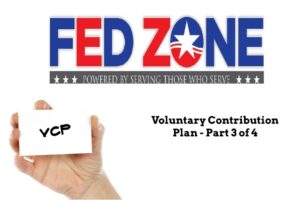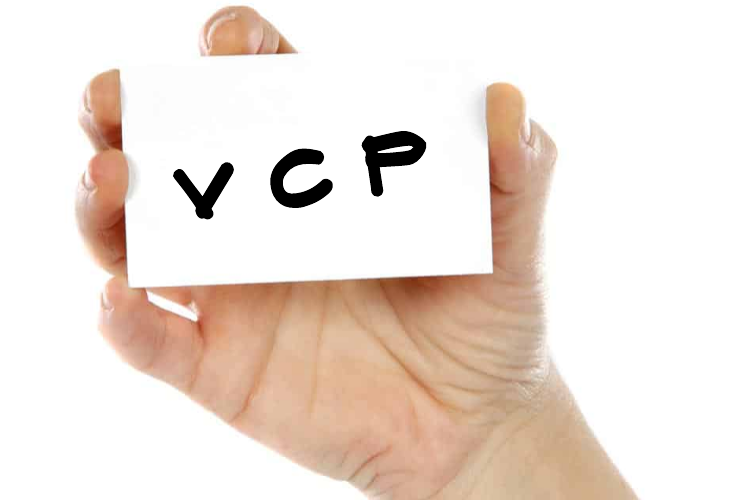CSRS VCP: Voluntary Contribution Program – Part III

Edward A. Zurndorfer
This third of four columns discussing the CSRS Voluntary Contribution Program (VCP) examines death and survivor benefits associated with a VCP account.
As discussed in the first column, CSRS and CSRS Offset employees can voluntarily contribute as much as 10 percent of their lifetime federal service gross salary earnings to the CSRS Retirement and Disability System. In so doing, they can receive another CSRS annuity once they retire from federal service. An important question is: What happens to a VCP account upon the VCP account owner’s death?
Upon retiring from federal service, a VCP account owner may elect a reduction in their additional CSRS annuity in order to purchase a VCP survivor annuity. Any individual – related or not related to the VCP account owner – may be designated as a VCP survivor annuitant. This individual need not be the same person designated as the survivor annuitant of the VCP account owner’s regular CSRS annuity.
Note that if a retiring CSRS or CSRS Offset employee does not include Form RI 38-124 (Voluntary Contributions Election) or Form SF 2802 (Application for Refund of Retirement Deductions) with the notation that voluntary contributions are to be refunded with their retirement application, OPM will assume that the retiring employee is electing an additional annuity from the VCP account. OPM also assumes that election of a survivor benefit on the retirement application also applies to the additional annuity from the VCP account, unless the retiring employee wants to designate a different person to receive it.
If the VCP account owner elects a survivor annuity, then their VCP annuity is reduced. The percentage reduction in the annuity depends on the difference in ages between the VCP account owner and the designated survivor annuitant, as shown in the following table:
| Age of Designated Survivor Annuitant in Relation to that of VCP Account Owner (Years Younger): | Reduction in Annuity of VCP Account Owner (Percent) |
| Older, same age, or less than 5 | 10% |
| 5 but less than 10 | 15% |
| 10 but less than 15 | 20% |
| 15 but less than 20 | 25% |
| 20 but less than 25 | 30% |
| 25 but less than 30 | 35% |
| 30 or more | 40% |
The VCP survivor annuity benefit is equal to 50 percent of the VCP annuitant’s net (gross VCP annuity less reduction for VCP survivor annuity) annuity.
The following example illustrates:
Age of annuitant at retirement: 60
Voluntary contribution account balance at the time of retirement: $120,000
Additional annual annuity without survivor annuity benefit is calculated as follows:
At age 60, for every $100 in VCP account, annuitant receives an annuity of $8
$120,000/$100 equals 1,200.
1,200 times $8 equals an additional annuity of $9,600 per year.
To calculate a survivor benefit for a spouse age 54 (six years younger than the annuitant), find the reduction in the table to give a survivor annuity to someone six years younger than the annuitant. In this case, the reduction is 15 percent. Using the $9,600 in the example:
Cost to give VCP survivor annuity benefit: $9,600 x 15 percent = $1,440
Net annuity to VCP annuitant: $9,600 less $1,440 = $8,160
Annual annuity to VCP survivor annuitant upon death of VCP annuitant from VCP annuity:
$8,160 x 50 percent = $4,080
Note that if the VCP account owner elects to provide an additional survivor annuity, then the reduction of the additional annuity rate is permanent. The reduction will not be eliminated if the designated survivor annuitant predeceases the annuitant nor can the additional survivor annuity be transferred to a different person.
If a VCP account owner dies while in federal service, then all voluntary contributions and accrued interest are payable to designated beneficiaries via Form SF 2808 (Designation of Beneficiary of CSRS Contributions). The money cannot be used to buy an additional survivor annuity for a widow(er) or for children. There is no accrued interest after the death of the VCP account owner.
If a VCP account owner has retired and dies without naming a designated survivor annuitant for the VCP annuity, then the voluntary contributions and accrued interest are payable immediately in a lump sum to designated beneficiaries via Form SF 2808. The contribution portion of the lump-sum payment is not taxable to the beneficiaries. But beneficiaries of the accrued interest portion of the lump-sum payment must pay federal and state income taxes on the amounts received.
Beneficiaries of the VCP account can avoid paying tax on the interest portion by requesting that the interest be directly transferred to an existing traditional IRA. A spousal beneficiary can request a direct transfer to a traditional IRA in his or her name, while a non-spousal beneficiary can request a direct transfer to a traditional “inherited” (“death”) IRA. The inherited IRA must have been already established before OPM can directly transfer the interest to the IRA. Non-spousal beneficiaries must make immediate withdrawals from the inherited IRA and pay income taxes but no early withdrawal penalty if younger than age 59.5. Under the SECURE Act passed in December 2019, non-spousal inherited IRA owners must withdraw their inherited IRA within 10 years of the original IRA or, in this case, VCP account owner’s death.

Edward A. Zurndorfer is a CERTIFIED FINANCIAL PLANNER™ professional, Chartered Life Underwriter, Chartered Financial Consultant, Chartered Federal Employee Benefits Consultant, Certified Employees Benefits Specialist and IRS Enrolled Agent in Silver Spring, MD. Tax planning, Federal employee benefits, retirement and insurance consulting services offered through EZ Accounting and Financial Services, and EZ Federal Benefits Seminars, located at 833 Bromley Street – Suite A, Silver Spring, MD 20902-3019 and telephone number 301-681-1652. Raymond James is not affiliated with and does not endorse the opinions or services of Edward A. Zurndorfer or EZ Accounting and Financial Services. The information has been obtained from sources considered to be reliable, but we do not guarantee that the foregoing material is accurate or complete. While we are familiar with the tax provisions of the issues presented herein, as Financial Advisors of RJFS, we are not qualified to render advice on tax or legal matters. You should discuss tax or legal matters with the appropriate professional.
